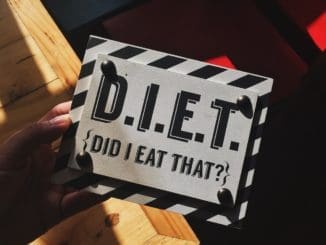
People all across the UK are now (or have been) hitting the gym as it’s (sort of still) the New Year. I commend these people for making the effort to plunge into fitness. However, if they don’t see results, they won’t stick with it. Cardiovascular exercise (otherwise known as cardio) is much more complex than just ‘running on a treadmill.’
‘Steady State’ Cardio is Not Enough
As we know it, traditional aerobic steady-state cardio exercise has almost zero effect on fat loss. (1) You know, the kind where you jog on a treadmill for 20-45 minutes at a reasonable pace, all the time feeling smug and reminding yourself how good this is for you. We’ve all done it. Whilst all exercise indeed burns calories, unfortunately, exercising this way will not get you the body you want. This is due to adaptation and, quite simply, how amazing your body is.
Consider this example: If you run for 20 minutes daily, you will undoubtedly see your cardiovascular fitness increase. Unfortunately, all that happens is that your body adapts and becomes more efficient at running. You will become fitter and better? But only at running.
Think about construction workers who do heavy manual labor for 8 hours daily. For the first few days and even weeks, they are sore as heck, and their muscles ‘hate’ them, but as the weeks pass, their soreness decreases until it is almost non-existent. Are they all huge ripped, muscular beasts? Generally speaking, no, they aren’t. (Note: This is not a slight at construction workers in any way, shape, or form.)
Your body is fantastic, and it adapts to doing what you consistently do. Therefore, training in intervals and progressively increasing your work rate is essential to avoid stagnation.
Takeaway: Doing cardio exercise in the traditional ‘fat burning zone’ (55%-65% of your maximum heart rate) does almost nothing for you regarding fat burning!
You Need Interval Training!
Interval training involves periods of higher intensity and ultimately more challenging work and periods of easier, lighter intensity work. This gives us the holy grail of fat loss – Excess Postexercise Oxygen Consumption, or EPOC effect.
The EPOC effect means you burn calories even after you stop training. If you do the aforementioned steady-state cardio, your calorie burn stops when you leave the gym. If you do interval training, your fat-burning can continue for many hours afterward, maximizing your efforts’ results.
A study conducted by the University of Western Ontario showed just how effective interval training is: They had 10 men and 10 women training 3x a week, one group running 30-second sprints and resting for around 4-6 minutes between efforts. The other group exercised 30-60 minutes on a treadmill at 65% of their maximum heart rate (the top end of the traditional fat-burning zone).
After 6 weeks of training, the interval training group had lost far more fat than the group doing plain old cardio. (12.4% compared to just 5.8%). That’s a pretty astonishing difference and might be alarming for those who spend an hour on a treadmill! (2).
Scientists don’t know the exact reasons for such huge differences in fat loss, but it’s thought that more fat is burnt due to (at the very least):
- The EPOC effect and increased resting metabolic rate for up to 24 hours after training (1)
- Targeting abdominal fat more than other variations of cardiovascular exercise (3)
- Improved insulin sensitivity in the muscles (1, 4)
- Spikes in growth hormone (1, 3)
Takeaway: Do high-intensity interval training for more comprehensive and longer-lasting results. Anything else cardio-wise is simply a waste of time. Interval training takes more effort, yes, but the results are substantially better. (The fact that it takes more effort should be a significant clue in why your time is better used this way.)
How Should I Structure My Interval Training Sessions?
The simplest way to structure an interval session is to start with a specific time ‘on,’ where you will be going hard (e.g., sprinting) and then spending as long as is necessary recovering. On a treadmill or running outside, a good start is twenty seconds of sprinting followed by two minutes of walking or light jogging to recover. Then you can change your rest periods as your fitness improves, and try to match your time every time for however many sets you want to do.
Example:
Sprint for 20 seconds. Recover (walk or slowly jog) for 2 minutes. Repeat 5x times.
As this becomes easier, start to decrease the rest times by 15-30 seconds.
Sprint for 20 seconds. Recover for 1 minute 30 seconds.
The optimum intensity to work towards would depend on the individual, but we like to get our clients working on a 1:1 ratio as quickly as possible? This means 20 seconds of maximum effort followed by 20 seconds of recovery.
If you put a lot of effort into your training (as you should be doing), it simply isn’t sustainable to do 10x or 15x sets of this type of training. If you can, your ‘on’ efforts are lackluster!
Final Thoughts
Cardio can be a great way to improve your general fitness and heart health, but it’s crucial that you do it right to get the maximum benefit from the hard work you put in. We have used sprinting as an example, but to make it easier, pick a cardio exercise that you enjoy? Could it be anything? Running, cycling, the elliptical machine, or even sports that have naturally occurring breaks or time constraints, like boxing, squash, or basketball.
What cardio activities do you enjoy?! Or do you prefer to lift weights? Comment below and tell us what you think! Share your best circuits or interval ideas and encourage others to do the same. Thanks for reading!
References:
1. J Obes. 2011;2011:868305. doi: 10.1155/2011/868305. Epub 2010 Nov 24. High-intensity intermittent exercise and fat loss.Boutcher SH.
2. Med Sci Sports Exerc. 2011 Jan;43(1):115-22. doi: 10.1249/MSS.0b013e3181e5eacd. Run sprint interval training improves aerobic performance but not maximal cardiac output. Macpherson RE, Hazell TJ, Olver TD, Paterson DH, Lemon PW.
3. Trapp EG, Chisholm DJ, Freund J, Boutcher SH. The effects of high-intensity intermittent exercise training on fat loss and fasting insulin levels of young women. International Journal of Obesity. 2008;32(4):684?691. [PubMed]
4. From: J Obes. 2011; 2011: 868305. Published online 2010 November 24. doi: 10.1155/2011/868305






Be the first to comment